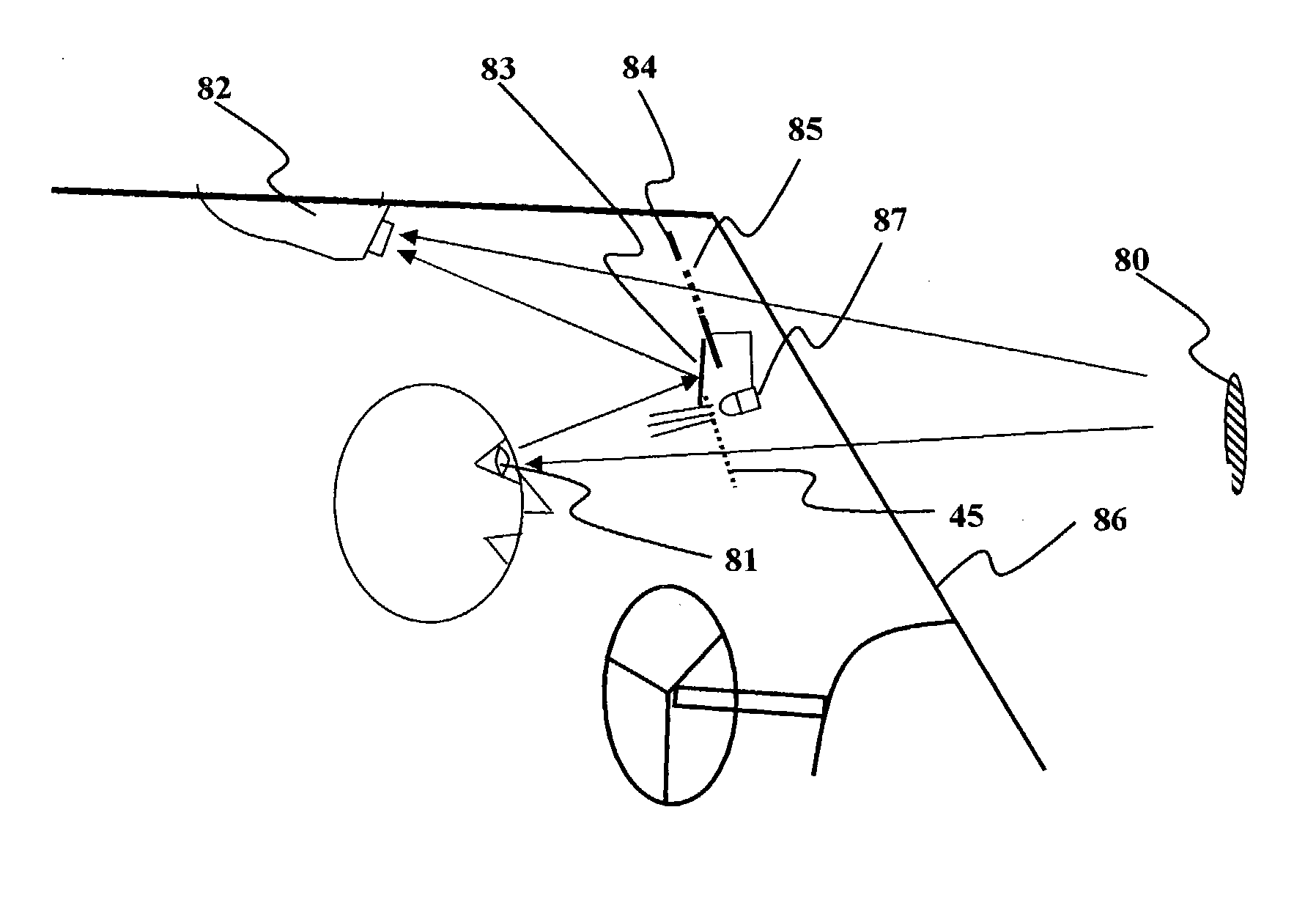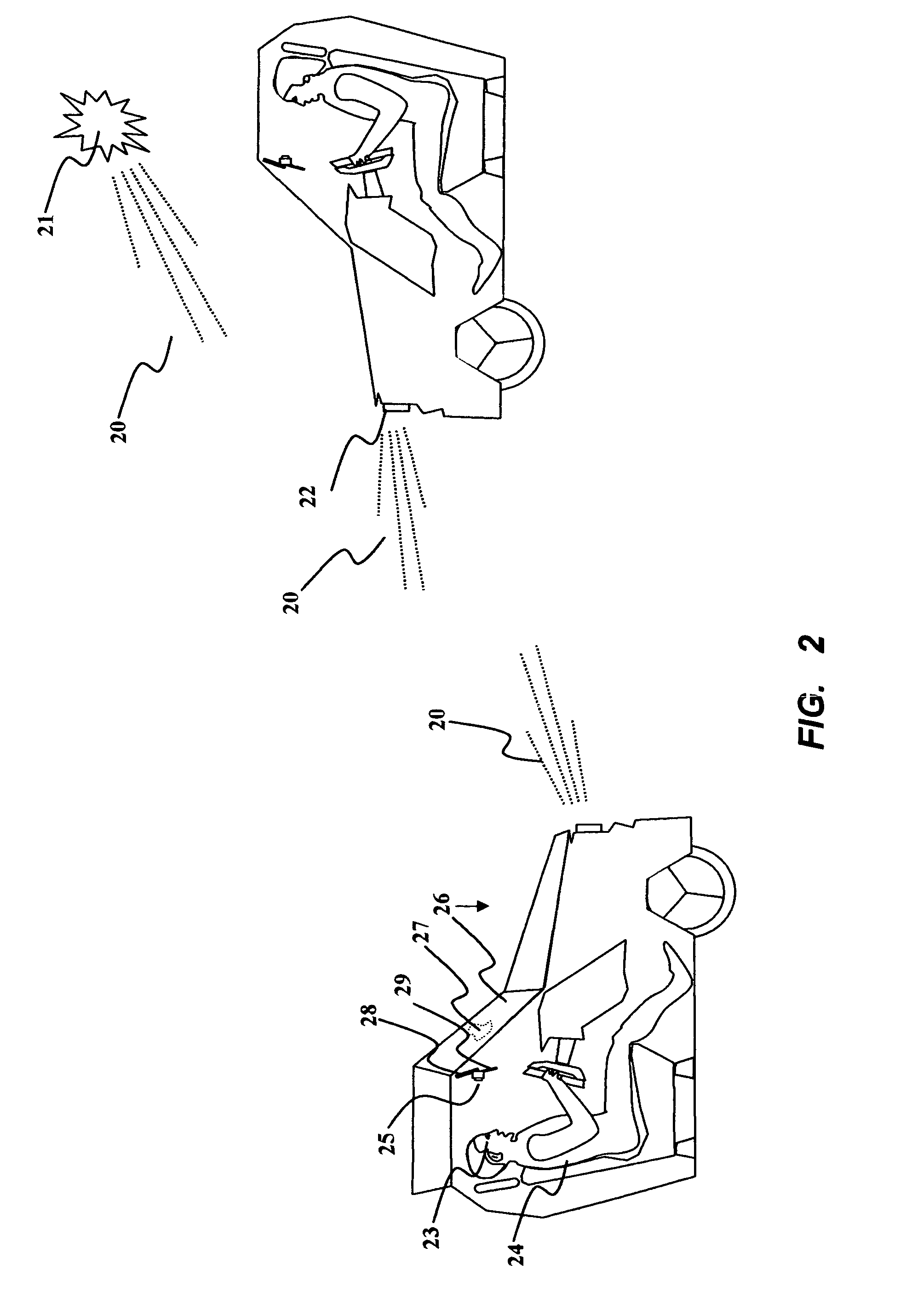Enhanced vision for driving
- Summary
- Abstract
- Description
- Claims
- Application Information
AI Technical Summary
Benefits of technology
Problems solved by technology
Method used
Image
Examples
Embodiment Construction
[0039]Referring now to the accompanying drawings wherein like reference numerals refer to the same or similar element, FIG. 1 is a block diagram of an application of the proposed method in an automotive system showing the various input and output devices. A control unit, CPU, DSP, microprocessor, computer, any or all of which are designated as 10, comprised of a logic and memory circuitry receives input signals from the driver, camera / detector unit 13 and optionally other sensors such as temperature sensors.
[0040]The CPU 10 performs analysis of input data and outputs signals to the display screen and / or safety, utility and convenience devices which serve the operator. The computer has a database of parameters, templates and programs. Computer algorithms carry out logical analysis of input data, compare with templates, scenarios and offer information to the driver or other safety and convenience devices. The computer 10 will also perform diagnostics of all system components. The driv...
PUM
 Login to View More
Login to View More Abstract
Description
Claims
Application Information
 Login to View More
Login to View More - R&D
- Intellectual Property
- Life Sciences
- Materials
- Tech Scout
- Unparalleled Data Quality
- Higher Quality Content
- 60% Fewer Hallucinations
Browse by: Latest US Patents, China's latest patents, Technical Efficacy Thesaurus, Application Domain, Technology Topic, Popular Technical Reports.
© 2025 PatSnap. All rights reserved.Legal|Privacy policy|Modern Slavery Act Transparency Statement|Sitemap|About US| Contact US: help@patsnap.com



